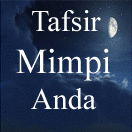One of the world’s great deserts, the Gobi is
located in central Asia encompassing more than 500,000
square miles (1,295,000 km2) in Mongolia and northern
China. The desert covers the region from the Great Khingan
Mountains northwest of Beijing to the Tien Shan north of
Tibet, but the desert is expanding at an alarming rate, threatening
the livelihood of tens of thousands of farmers and
nomadic sheepherders every year. Every spring dust from the
Gobi covers eastern China, Korea, and Japan and may extend
at times around the globe. Northwesterly winds have
removed almost all the soil from land in the Gobi, depositing
it as thick loess in eastern China. Most of the Gobi is situated
on a high plateau resting 3,000–5,000 feet (900–1,500 m)
above sea level, and it contains numerous alkaline sabkhas
and sandy plains in the west. Regions in the Gobi include
abundant steppes, high mountains, forests, and sandy plains.
The Gobi has yielded many archaeological, paleontological,
and geological finds, including early stone implements,
dinosaur eggs, and mineral deposits and precious stones
including turquoise and jasper.
See also DESERT.

















Tidak ada komentar:
Posting Komentar
Catatan: Hanya anggota dari blog ini yang dapat mengirim komentar.